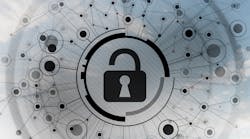Despite the clear benefits of IIoT, the path to its full integration isn't without hurdles. Given the interconnected nature of IIoT devices, they are potential gateways for cyber threats. The essence of IIoT, built on openness and interconnectivity, can, paradoxically, introduce new vulnerabilities to illicit information harvesting, data leaks, and intellectual property theft.
In the arena of IIoT risk management and cybersecurity, the vast majority of organizations are barely flexing their muscles. They:
- Exist at a nascent stage of IIoT cybersecurity capabilities, with investments pouring in, deployments taking shape and benefits only just beginning to sprout.
- Possess only a moderate grasp of IIoT cybersecurity, still in the process of gauging the potential hazards that their IoT deployments may inflict on their organizational framework.
- Forego the practice of conducting systematic (annual) IIoT cybersecurity risk assessments, opting instead for a sporadic, case-by-case approach.
- Have either sparingly established or outright neglected the implementation of critical security controls for IoT deployments.
Staggeringly, on average, upwards of 75% of organizations are only dipping their toes into the waters of IoT cybersecurity risk mitigation practices and technologies, with their efforts still at the experimental or pilot stages.
The solution? It is crucial to incorporate robust cybersecurity protocols and adhere to secure-by-design principles from the outset of any IIoT strategy. Here are the nine solutions - ordered by the extent of their impact:
1. Establishing clear security and privacy service-level agreements (SLAs): Organizations must implement explicit SLAs focusing on data security and privacy to counter cyber threats. Key SLA data points should include "Incident Response Time" and "Percentage of Incidents Detected by Internal Systems," tracking response speed and threat-detection efficiency.
2. Establishing advanced behavioral analytics: Organizations can use advanced analytics to identify abnormal device behaviors, enabling rapid detection and response to potential endpoint attacks. A crucial data point to track could be the "time-to-detect anomaly," measuring the speed of anomaly detection in device behavior.
3. Implementing built-in diagnostics in devices: Incorporating built-in diagnostics in IIoT devices allows for the early detection of malfunctions due to component failure or tampering attempts. The key metric to keep an eye on could be the "Mean Time to Detect (MTTD) Malfunction," which serves as a crucial determinant of the system's proficiency in swiftly detecting device malfunctions or tampering attempts.
4. Leveraging AI for real-time monitoring: The implementation of AI-driven fraud detection systems, part of cognitive practices, aids in identifying and preventing fraudulent activities by discerning unusual behavior patterns and inconsistencies in data.
5. Deploying automated scanning of connected devices: To ensure the integrity of the network, automated scanning systems should continuously monitor the state of connected devices, identifying any potential vulnerabilities or signs of intrusion.
6. Strengthening user privacy controls: Enhancing privacy controls for IIoT devices aids in protecting user data, ensuring confidentiality and thereby reducing the risk of data breaches. Implementing safe authentication methods such as strong passwords or multi-factor authentication (MFA) are effective authentication strategies in IIoT. Data confidentiality is ensured by using symmetric and asymmetric encryption, as well as using virtual private networks (VPNs) and secure communication protocols. Regular updates and patching solve security flaws, whereas user permission and transparency boost confidence in the IIoT environment.
7. Reinforcing IIoT authentication measures: Robust authentication mechanisms add a crucial layer of security, preventing unauthorized access to IIoT devices and protecting the network from potential cyber-attacks. Two-factor authentication (2FA), biometrics, and hardware tokens are strong authentication measures in IIoT systems. These solutions provide strong security by demanding many authentication factors. On the other hand, weak authentication procedures in IIoT systems involve using weak passwords or depending only on single-factor authentication.
8. Maintaining an authorized and unauthorized software inventory: Keeping this inventory up to date helps identify potentially harmful applications and maintains the IIoT ecosystem's overall security.
9. Deploying secure and hardened device hardware and firmware: Consider the scenario of a manufacturing plant that proactively integrates fortified hardware and firmware infrastructure throughout its IIoT network. The effectiveness of this initiative could be quantified by monitoring the percent reduction in hardware/firmware-based attacks over a fixed duration, such as one year.
As the powerhouse behind Industry 4.0, IIoT promises a new era of innovation and efficiency in the industrial sector. However, to maximize the advantages of this revolution, industries must be equipped to navigate the potential pitfalls. By striking a balance between the power surge of IIoT integration and the implementation of robust cybersecurity and data management strategies, industries can fully ride the wave of Industry 4.0. Although the journey may be complex, the rewards are promising.
Bidyut Sarkar is a senior solution manager at IBM. Ravi Dave is an SAP application manager at Lakeshore Learning Materials.



